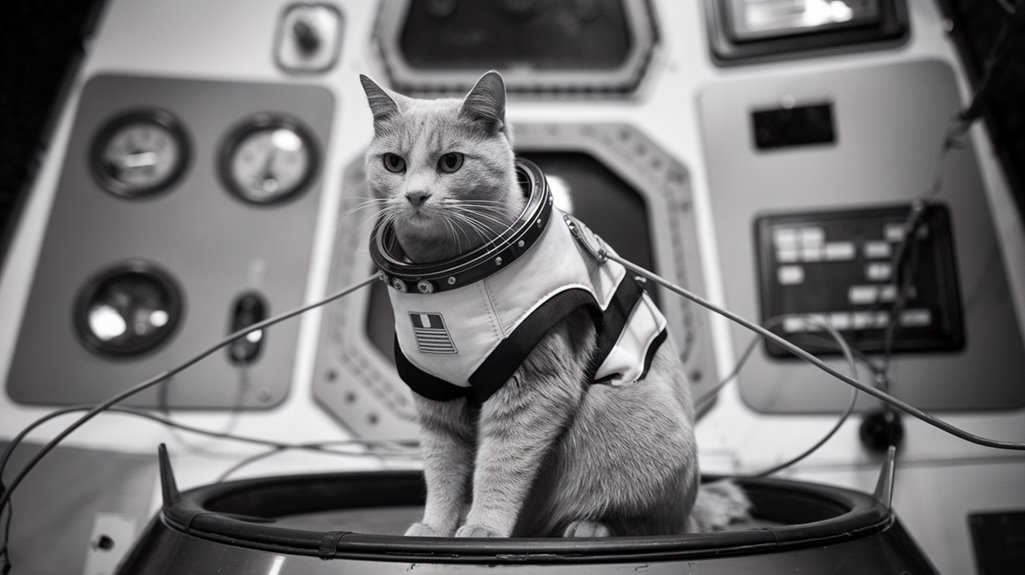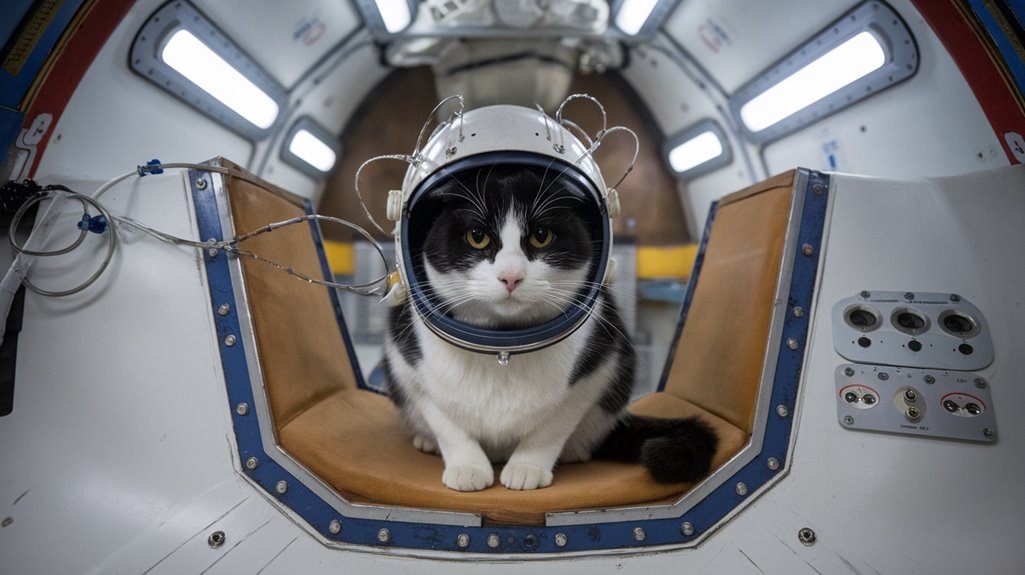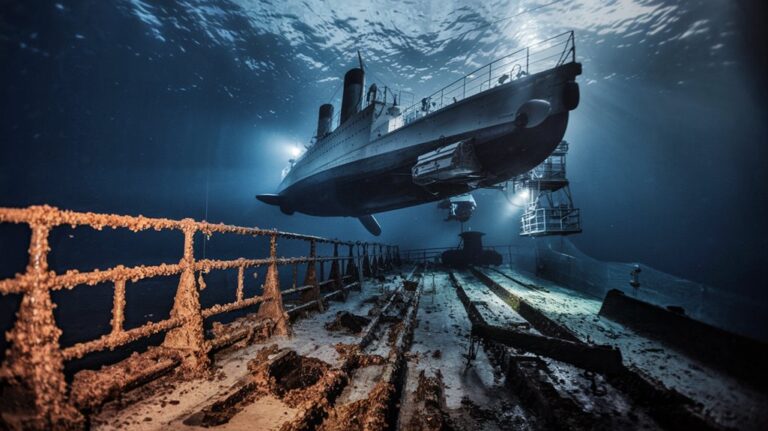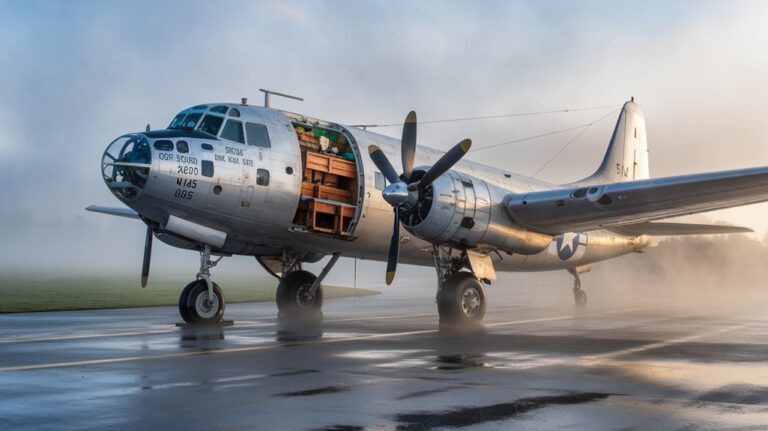Meet Félicette: The First Cat to Survive Space Travel
In 1963, when only two dozen humans had ventured into space, a small tuxedo cat named Félicette made history 157 kilometers above Earth. You've probably heard of Laika the space dog, but this lesser-known feline astronaut has an equally compelling story. As you follow her journey from the streets of Paris to the stars, you'll discover how a stray cat became an unlikely pioneer in space exploration and changed our understanding of spaceflight's effects on living creatures.
From Parisian Streets to Space Pioneer
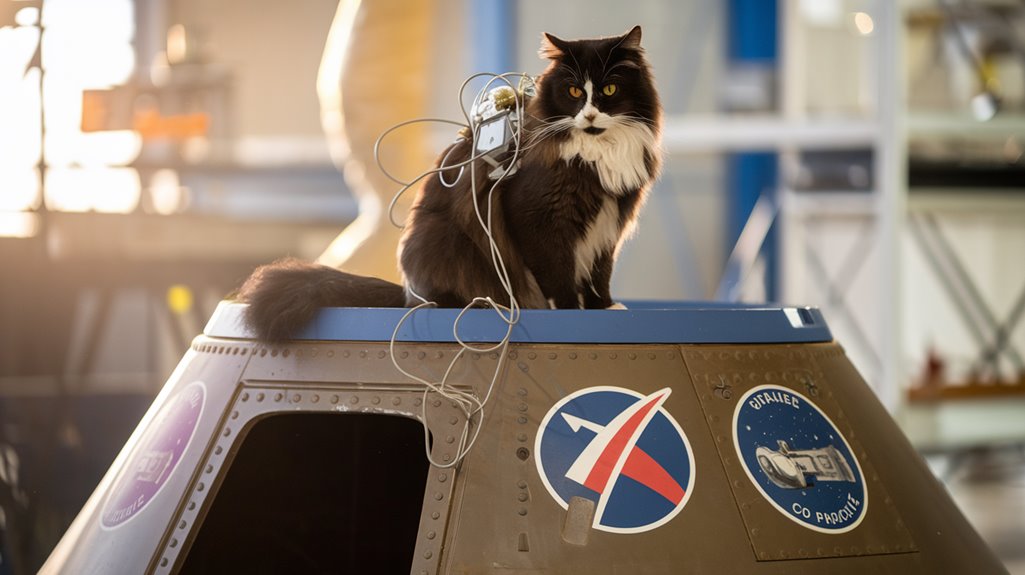
Though many believe Félicette was a stray cat from Paris's streets, she actually came from a pet dealer as part of a group of 14 female cats selected for France's space program.
Originally known as C341, this future feline astronaut caught scientists' attention with her calm demeanor and small frame, weighing less than 5 kilograms.
Félicette's origins remained mysterious, as details about the pet dealer and acquisition process were never fully documented.
You might be surprised to learn that she earned her spot in the program through rigorous testing, including high G-force exposure and extended confinement trials.
Scientists specifically chose cats for their sensitive vestibular system, which helps maintain balance.
The French media later gave her the name Félicette, replacing her clinical designation C341.
Following her successful five-minute journey on October 18, 1963, she became the first and only cat to reach space and return safely.
Her incredible journey resulted in valuable data collection through electrodes implanted in her brain that transmitted crucial information back to Mission Control.
The Historic Mission: A Cat's Journey Beyond Earth
On October 18, 1963, Félicette's journey from test subject to space pioneer reached its peak as she boarded the Véronique AG1 rocket in Hammaguir, Algeria. Selected from the streets of Paris, Félicette was chosen from among 14 potential cat astronauts for her exceptional calmness and ideal weight.
A rigorous training program exposed her to high-G centrifuge tests and simulated rocket noise to prepare her for spaceflight.
During her historic flight, she faced intense space challenges, enduring crushing g-forces of up to 9.5 and reaching speeds six times faster than sound.
The cat's experience included a remarkable five minutes of weightlessness at an altitude of 157 kilometers. Scientists monitored her neurological responses through implanted electrodes, applying electrical impulses to her brain and leg to study her reactions in space.
After 13 minutes, her capsule landed upside-down, but Félicette emerged unharmed. Though she provided invaluable data about living beings in space, she was euthanized two months later for brain examination, cementing her legacy as the first and only feline space traveler.
Behind the Scenes: Training and Preparation
Before launching Félicette into space, the French space program undertook an extensive selection and training process that started with 14 female cats.
Scientists at CERMA chose candidates based on their calm temperament and ability to handle confinement challenges. To maintain objectivity, they assigned each cat a numerical code instead of names. Originally designated as C341, Félicette only received her name after the successful mission.
The rigorous training techniques included placing cats in small containers to test their reactions to confined spaces. They needed to show a calm demeanor throughout all testing phases.
You'd be amazed to learn that these felines endured centrifuge testing to simulate launch forces and re-entry conditions. They also underwent electrode implantation to monitor their neural responses and spent hours in restraint cloths.
Through these demanding tests, Félicette emerged as the ideal candidate, demonstrating exceptional composure and meeting the strict weight requirements for the mission.
Scientific Impact and Research Breakthroughs
While Félicette's mission lasted just 15 minutes, its scientific impact revolutionized our understanding of space travel's effects on living organisms. Scientists monitored her vital signs through implanted brain electrodes throughout the journey. The scientific discoveries from her brain electrode data proved that mammals could withstand both the intense g-forces of launch and the weightlessness of space. Launched from a space center in Algeria, Félicette made history as the first feline astronaut.
You'll find her contributions particularly notable as they helped establish safety parameters for future human spaceflight.
Key findings from the mission include:
- Confirmation that living beings could survive space travel and re-entry
- Neural response data during various phases of spaceflight
- Evidence of physiological adaptation to zero gravity
- Validation of life support systems in space capsules
Though research ethics have evolved considerably since Félicette's time, her sacrifice provided essential insights that shaped modern space exploration and influenced how we approach animal testing in scientific research.
Honoring a Space Hero's Legacy
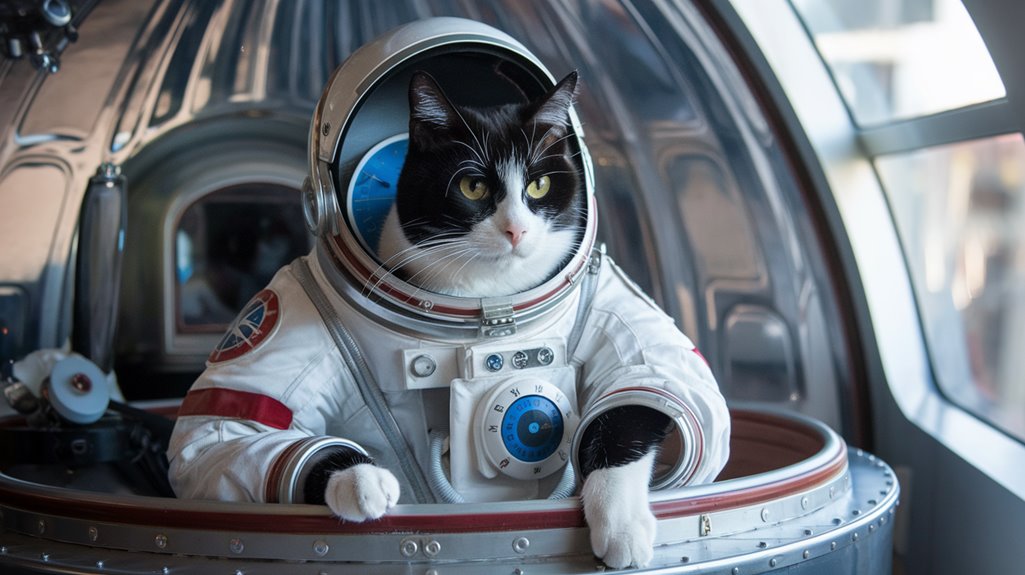
Despite her groundbreaking achievement as the first cat in space, Félicette's legacy remained largely forgotten for decades. You might be surprised to learn that even commemorative stamps mistakenly labeled her as a male cat named Felix, while other space animals like Laika and Ham overshadowed her contributions.
However, recent efforts have brought her story back into the spotlight. A successful 2017 Kickstarter campaign raised $57,000 for a bronze statue, which now stands at the International Space University in Strasbourg. Her 13-minute mission included a successful parachute descent, making her the only feline to survive a journey to space.
While ethical considerations surrounding her mission and subsequent euthanasia continue to spark important discussions about animal testing in space research, Félicette's cultural impact endures. She's become both an inspirational figure and a valuable teaching tool, demonstrating how even small creatures could survive the challenges of space travel.

